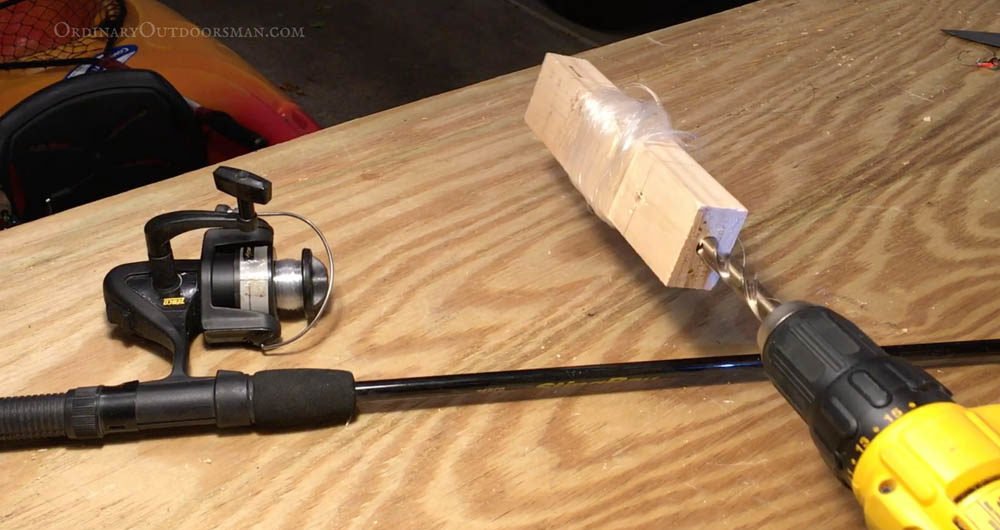As I was getting ready for spring fishing, I proceeded to do what I normally do…replace the line on my fishing reel. I usually do this once a year, or sometimes before a big trip. Fishing line can certainly be used longer than a year, but as an ordinary outdoorsman who uses standard, inexpensive monofilament line, I have found that changing it at least once a year makes fishing better. Monofilament develops a “memory” and over time, especially with exposure to sun, it can become brittle. Besides, fresh line casts better.
But it can be tedious to strip your fishing reel of what is usually 100+ yards of line.
Sure, they do make tools to accomplish this, but it seems extravagant to purchase a tool to save what is maybe five minutes of my time each time I change my fishing line.
Strip your fishing reel with your drill.
Then it hit me. Why not use my power drill? It seemed like a no brainer. I realized I would need to put something in the drill besides just a bit in order to speed up the process (larger diameter = more line per rotation). So I put in a sturdy bit and drilled it into the end of a piece of scrap wood.
It worked like a charm! In fact, it worked even faster than I expected.
A couple of tips if you try this.
1. Do this at your own risk.
Drills weren’t really made for this, and if you aren’t careful you could actually hurt yourself or damage your reel.
2. Whatever you insert in your drill will need to be balanced and centered.
I drilled into the end of a small piece of scrap as close to center as I could eyeball. It was a bit off balance, but not too bad. The more off center you are, the more wobble, and therefore the slower you will have to go.
3. To get started, simply wrap the loose end around the object a couple times and start slowly.
Starting slowly is important. You don’t want to hurt yourself or damage your gear. Don’t forget to release the line on the reel so it can be stripped off freely.
4. Pay attention as you near the end.
This caught me by surprise. The line came off more quickly than i expected and the whole pole jerked towards the drill. Fortunately there was no damage.
5. Cut the line loose from the object you used.
The first couple turns tightened the line on the object, but once it got going, it wrapped fairly loosely (as you can see in the picture). I had to cut some of the line to get the rest to slide off the scrap wood. But it came off easily after that. If it’s truly a scrap, you can probably just throw the whole thing away.
6. Dispose of your old line properly.
At the very least, throw it away in the trash. Better yet, recycle it. NEVER throw fishing line in the lake or simply on the ground. There are recycling containers at many lakes and most stores that sell fishing gear will accept old line for recycling.

How about you? What are your favorite fishing hacks?




